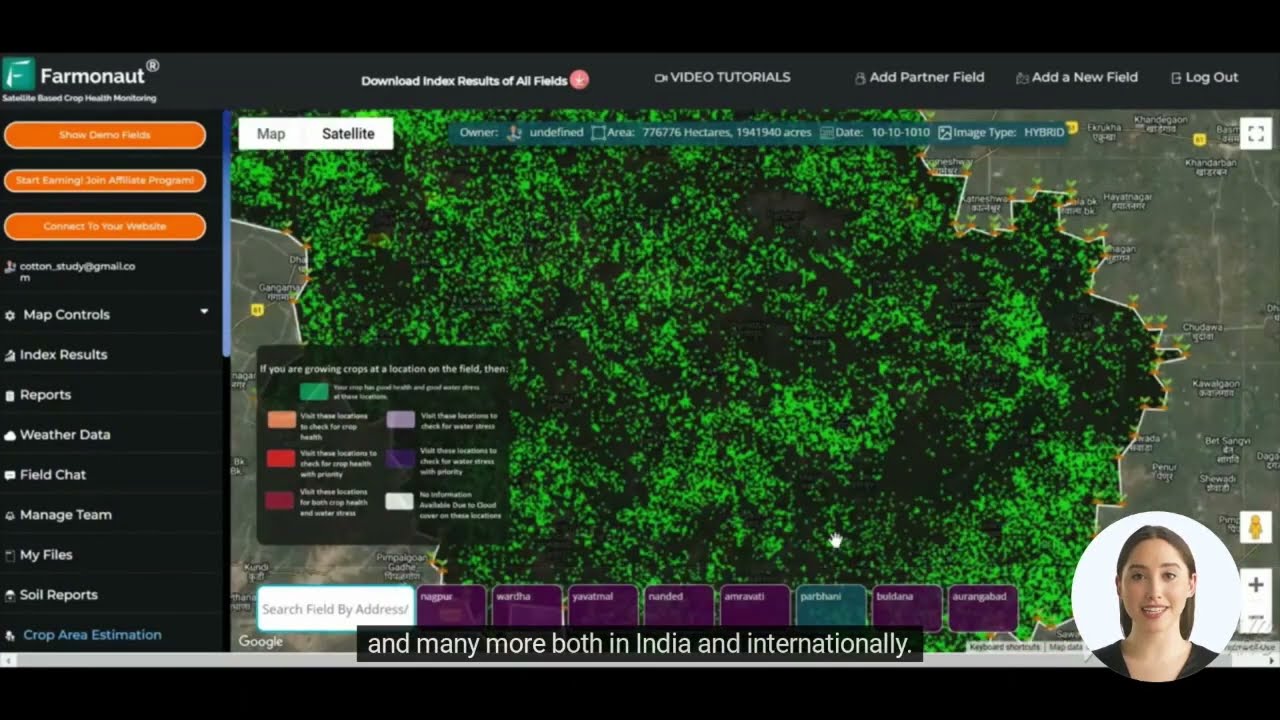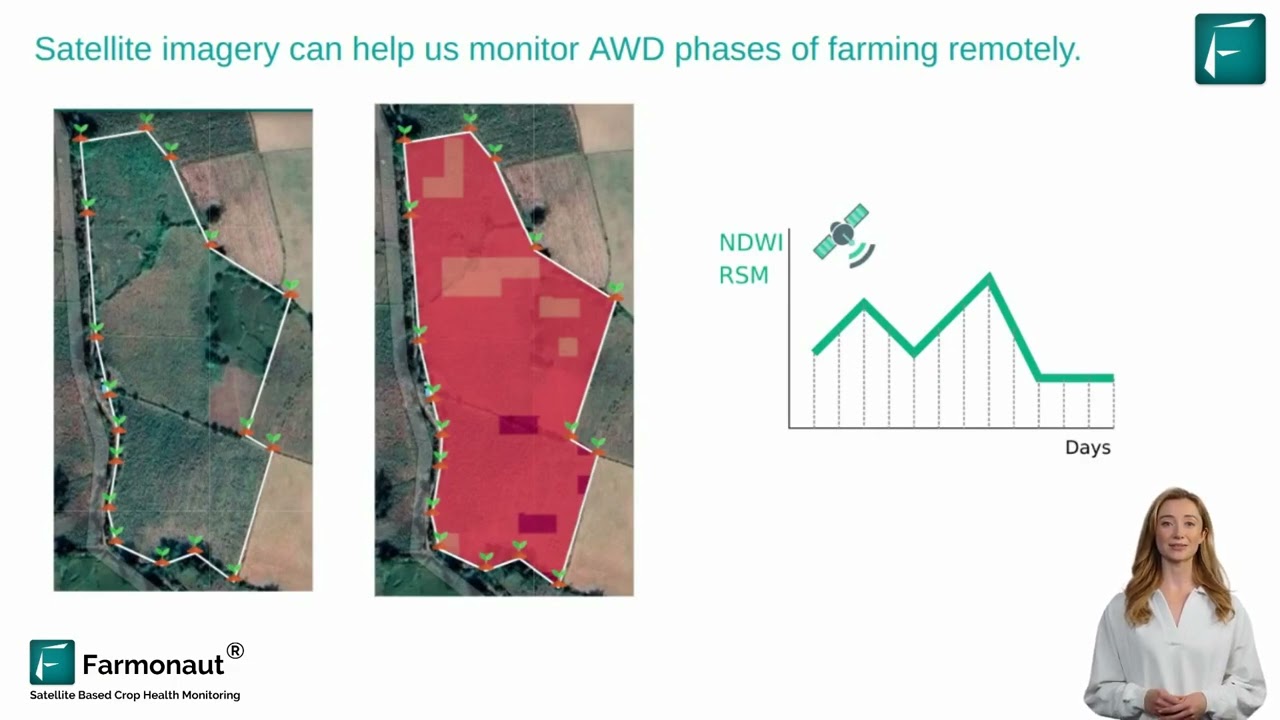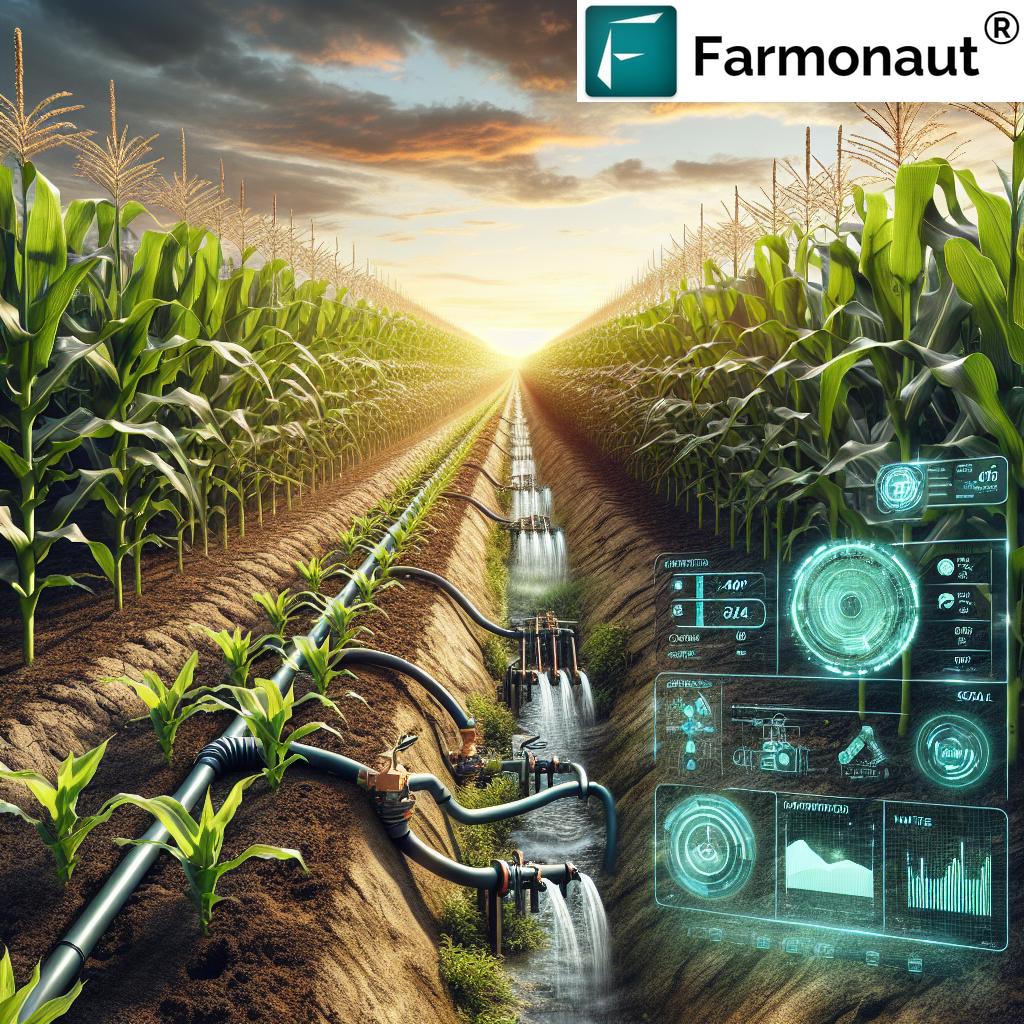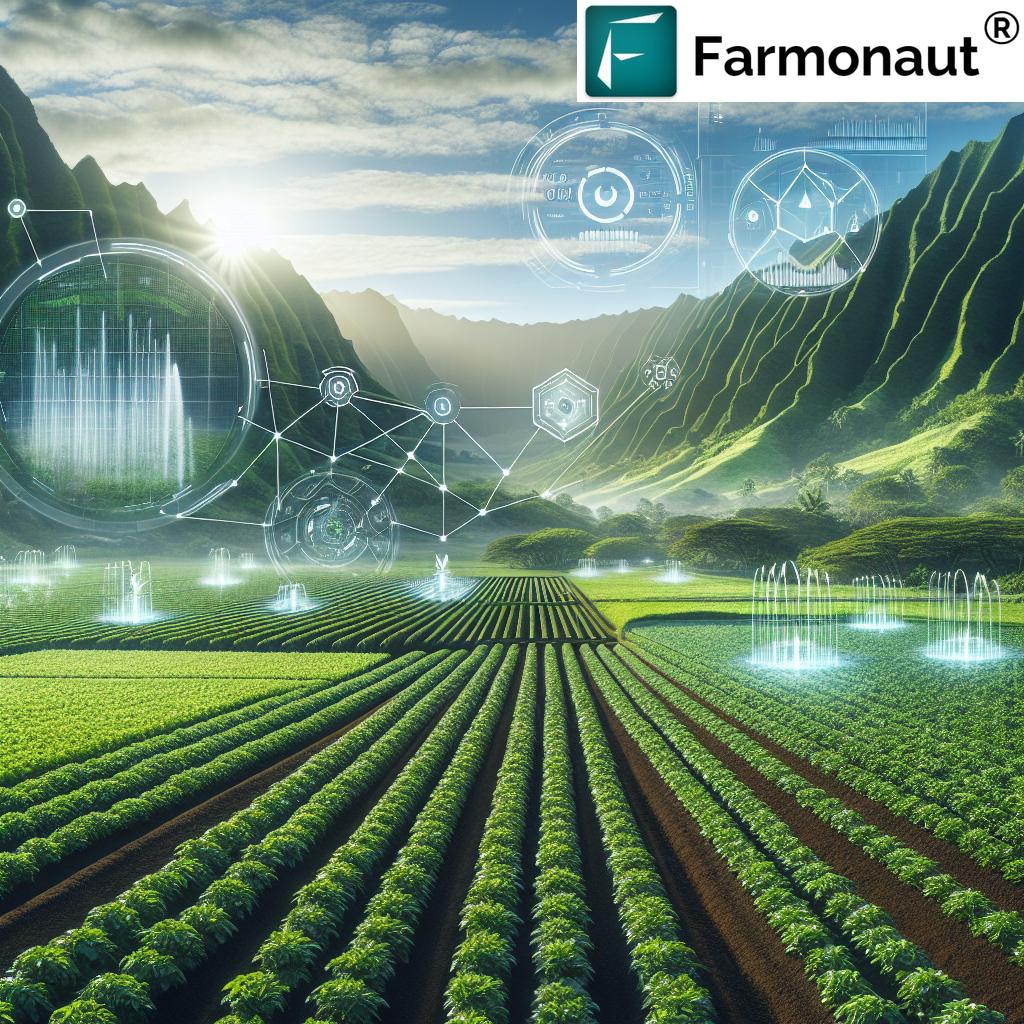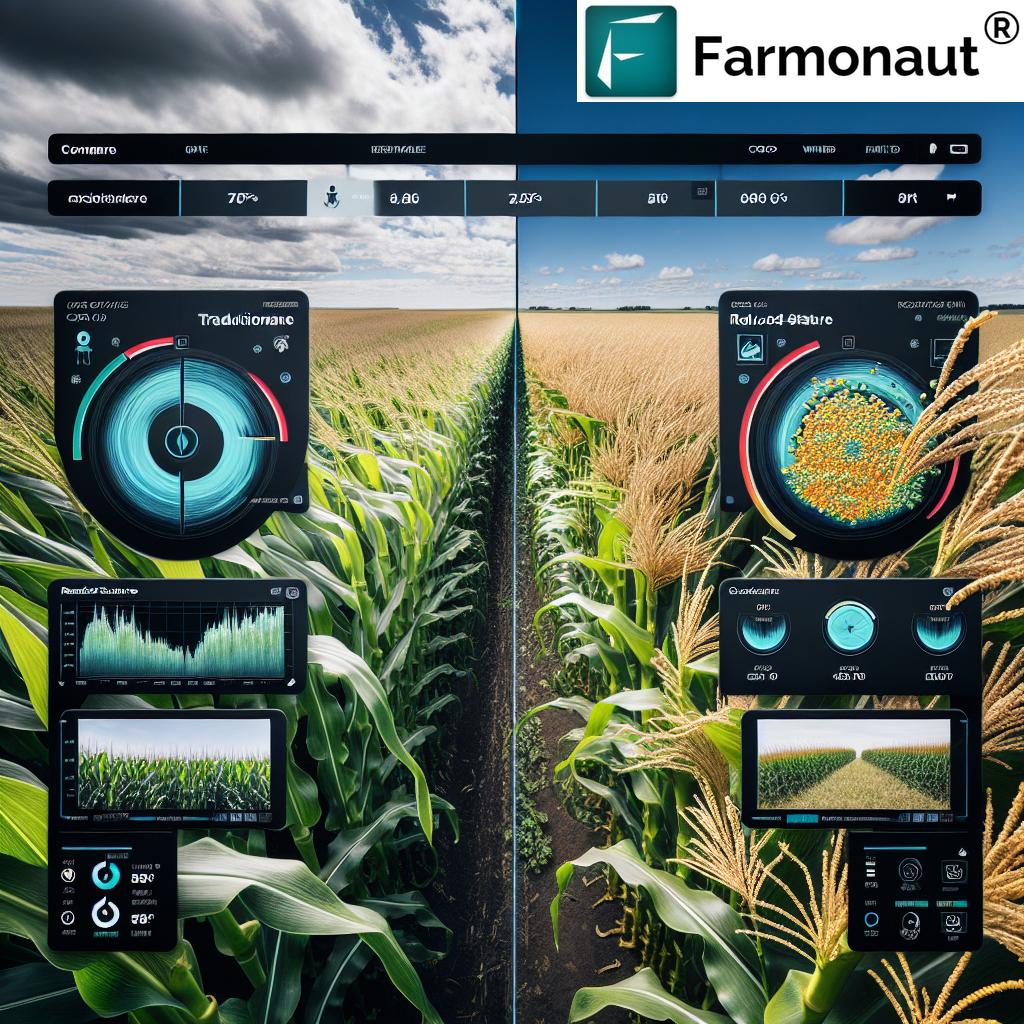Soybean Market Watch: Analyzing Weekly Trends and Price Fluctuations in US Agriculture
“Soybean futures trading accounts for over 30% of daily agricultural commodity transactions in the US market.”
Welcome to our comprehensive analysis of the soybean market, where we delve into the latest trends, price fluctuations, and technological advancements shaping the agricultural landscape. As leaders in precision agriculture technology, we at Farmonaut are committed to providing you with the most up-to-date information and insights to help you navigate the complex world of commodity trading and farm management.
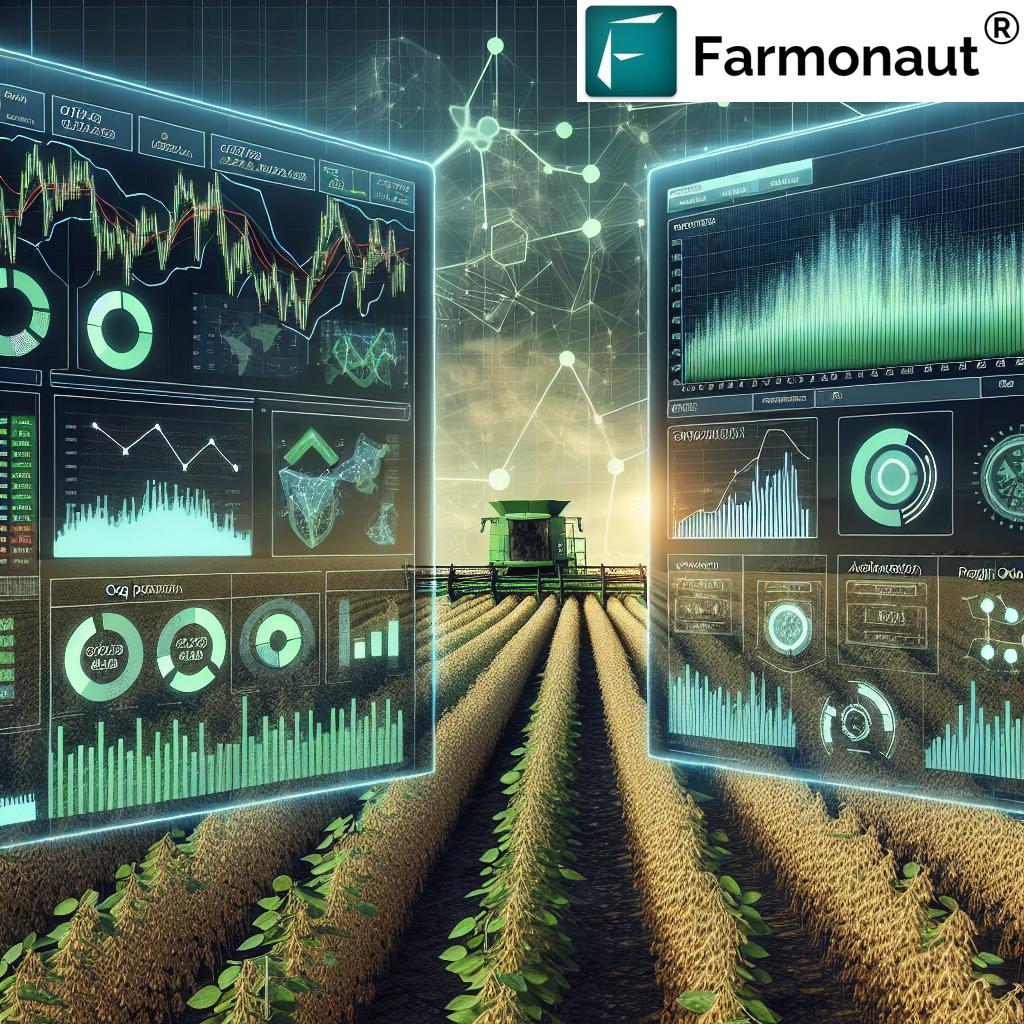
Soybean Market Trends: A Weekly Overview
In this week’s agricultural market analysis, we’re focusing on the dynamic soybean market, a crucial component of US agriculture. Soybean prices have been experiencing significant fluctuations, influenced by various factors including weather conditions, global demand, and trade policies. Let’s break down the key trends we’ve observed:
- Price Volatility: Soybean futures trading has shown increased activity, with prices oscillating due to uncertain weather forecasts in major growing regions.
- Export Demand: International demand, particularly from China, continues to play a pivotal role in shaping soybean commodity prices.
- Domestic Consumption: The US livestock industry’s demand for soybean meal as feed has remained steady, providing a stabilizing effect on the market.
- Crop Conditions: Recent USDA reports indicate varying crop conditions across different states, impacting yield projections and market sentiment.
To give you a clearer picture of the current market situation, we’ve compiled a weekly soybean price comparison table:
| Region | Previous Week Price ($/bushel) | Current Week Price ($/bushel) | Percentage Change |
|---|---|---|---|
| Iowa | 13.25 | 13.45 | +1.51% |
| Illinois | 13.30 | 13.50 | +1.50% |
| Minnesota | 13.15 | 13.35 | +1.52% |
| Indiana | 13.20 | 13.40 | +1.52% |
| National Average | 13.23 | 13.43 | +1.51% |
This table clearly illustrates the week-over-week changes in soybean prices across major producing states, providing valuable insights for farmers and industry professionals alike.
The Role of Technology in Soybean Farming
As we navigate these market fluctuations, it’s crucial to recognize the growing importance of technology in modern agriculture. Precision agriculture technology, including farm management software and agritech solutions, is revolutionizing how we approach soybean cultivation and market analysis.
At Farmonaut, we’re at the forefront of this technological revolution, offering advanced satellite-based farm management solutions. Our platform provides real-time crop health monitoring, AI-based advisory systems, and resource management tools, all designed to optimize crop yields and improve farm efficiency.
Explore our cutting-edge solutions:
Leveraging GIS in Soybean Production
Geographic Information Systems (GIS) have become an integral part of modern agriculture, transforming field management and decision-making processes. For soybean farmers, GIS technology offers numerous benefits:
- Precise Field Mapping: Accurate mapping of soybean fields helps in better resource allocation and crop management.
- Yield Forecasting: By analyzing historical data and current field conditions, GIS helps in predicting potential yields more accurately.
- Pest and Disease Management: Early detection of pest infestations or disease outbreaks through GIS-enabled monitoring can save crops and reduce losses.
- Irrigation Planning: GIS data aids in optimizing irrigation strategies, ensuring efficient water usage in soybean cultivation.
“GIS technology in agriculture has increased crop yield optimization by up to 15% in the last decade.”

Our Farmonaut platform integrates advanced GIS capabilities, allowing farmers to harness the power of spatial data for improved soybean production. By combining satellite imagery with AI-driven insights, we provide a comprehensive view of field conditions, enabling data-driven decision-making.
Soybean Futures Trading: Understanding the Market Dynamics
Soybean futures trading is a critical aspect of the agricultural commodity market. For farmers and traders alike, understanding the intricacies of futures contracts can be the key to financial success. Here’s what you need to know:
- Contract Specifications: Soybean futures contracts typically represent 5,000 bushels, with prices quoted in cents per bushel.
- Market Influences: Factors such as weather patterns, global supply and demand, and geopolitical events can significantly impact soybean futures prices.
- Seasonal Patterns: Soybean prices often follow seasonal trends, with planting and harvesting periods being particularly crucial.
- Risk Management: Futures contracts serve as an essential tool for farmers to hedge against price risks and for traders to speculate on market movements.
At Farmonaut, we understand the importance of staying informed about market trends. Our platform provides real-time data and analytics that can help you make more informed decisions in the volatile world of soybean futures trading.
Crop Yield Optimization: Strategies for Soybean Farmers
Maximizing soybean yields is a top priority for farmers, and with the advent of precision agriculture technology, there are more tools than ever to achieve this goal. Here are some key strategies:
- Soil Health Management: Regular soil testing and appropriate amendments can significantly boost soybean productivity.
- Precision Planting: Using GPS-guided equipment for accurate seed placement and spacing.
- Integrated Pest Management (IPM): Employing a combination of biological, cultural, and chemical methods to control pests and diseases.
- Water Management: Implementing efficient irrigation systems and monitoring soil moisture levels to ensure optimal water usage.
- Data-Driven Decision Making: Utilizing farm management software to analyze field data and make informed decisions.
Our Farmonaut platform offers comprehensive tools for crop yield optimization, including satellite-based crop health monitoring and AI-powered advisory systems. By leveraging these technologies, soybean farmers can significantly improve their yields and profitability.
Explore our API for custom integration: Farmonaut API
For developers, check out our documentation: API Developer Docs
Agricultural Commodity Updates: Beyond Soybeans
While our focus has been on soybeans, it’s important to keep an eye on other key agricultural commodities that influence the overall market landscape:
- Corn: As a major competitor for acreage with soybeans, corn prices and planting intentions can significantly impact soybean markets.
- Wheat: Global wheat production and export trends often have ripple effects on other grain markets, including soybeans.
- Canola: As another oilseed crop, canola markets can provide valuable insights into broader trends affecting soybean demand and prices.
- Cotton: While not directly competitive with soybeans, cotton acreage decisions can influence overall crop rotations and land use patterns.
At Farmonaut, our comprehensive agricultural market analysis covers these commodities and more, providing you with a holistic view of the industry landscape.
Innovative Farming Techniques for Soybean Production
The world of agriculture is constantly evolving, with new techniques and technologies emerging to improve productivity and sustainability. Here are some innovative approaches being adopted in soybean farming:
- No-Till Farming: This conservation tillage method helps preserve soil structure and reduce erosion, benefiting long-term soybean yields.
- Cover Cropping: Planting cover crops between soybean seasons can improve soil health, reduce weed pressure, and enhance nutrient availability.
- Precision Fertilization: Using variable-rate technology to apply fertilizers based on specific field needs, optimizing nutrient use efficiency.
- Drone Technology: Employing drones for aerial imaging and targeted application of inputs, enhancing precision in large soybean fields.
- AI-Powered Crop Monitoring: Utilizing artificial intelligence to analyze satellite and drone imagery for early detection of crop stress or disease.
Our Farmonaut platform incorporates many of these innovative techniques, providing farmers with cutting-edge tools to enhance their soybean production. From AI-driven crop health monitoring to precision resource management, we’re committed to bringing the latest advancements to your fingertips.
Irrigation Strategies for Optimal Soybean Growth
Proper irrigation management is crucial for maximizing soybean yields, especially in regions with variable rainfall. Here are some effective irrigation strategies:
- Deficit Irrigation: Strategically reducing water application during less sensitive growth stages to optimize water use efficiency.
- Drip Irrigation: Implementing precise, low-volume water delivery systems to minimize water waste and improve plant uptake.
- Sensor-Based Irrigation: Using soil moisture sensors and weather data to determine optimal irrigation timing and amounts.
- Alternate Wetting and Drying (AWD): A technique that alternates between flooded and non-flooded conditions, saving water without significantly impacting yields.
At Farmonaut, our satellite-based monitoring systems provide real-time data on soil moisture levels, helping farmers make informed decisions about irrigation timing and volume.
Pest Control and Disease Management in Soybean Crops
Effective pest and disease management is essential for protecting soybean yields. Here are some key strategies:
- Regular Scouting: Conducting frequent field inspections to identify pest or disease issues early.
- Biological Control: Utilizing natural predators or beneficial microorganisms to manage pest populations.
- Resistant Varieties: Planting soybean varieties bred for resistance to common pests and diseases.
- Crop Rotation: Implementing diverse crop rotations to break pest and disease cycles.
- Targeted Pesticide Application: Using precision technology for efficient and environmentally-friendly pesticide use when necessary.
Our Farmonaut platform includes advanced pest and disease detection capabilities, leveraging AI and satellite imagery to alert farmers to potential issues before they become severe.
The Future of Soybean Farming: Trends and Predictions
As we look to the future of soybean farming, several trends are shaping the industry:
- Sustainable Practices: Increasing focus on environmentally friendly farming methods to meet consumer demands and regulatory requirements.
- Genetic Advancements: Development of soybean varieties with enhanced traits for yield, pest resistance, and nutritional content.
- Automation and Robotics: Greater adoption of autonomous machinery for planting, harvesting, and field management.
- Data-Driven Agriculture: Continued integration of big data and AI in farm management decisions.
- Climate-Resilient Farming: Adaptation strategies to address challenges posed by climate change.
At Farmonaut, we’re committed to staying at the forefront of these trends, continually updating our platform to provide you with the most advanced tools and insights for successful soybean farming.
Farmonaut Subscriptions
FAQ Section
Q: How often should I monitor soybean futures prices?
A: It’s advisable to check soybean futures prices daily, or at least several times a week, to stay informed about market trends and make timely decisions.
Q: What factors most significantly impact soybean prices?
A: Key factors include weather conditions in major growing regions, global supply and demand, trade policies, and competition from other crops like corn.
Q: How can precision agriculture technology improve soybean yields?
A: Precision agriculture tools like satellite monitoring, variable-rate technology, and AI-driven analytics can optimize resource use, detect issues early, and inform better decision-making, leading to improved yields.
Q: What are the benefits of using Farmonaut’s platform for soybean farming?
A: Farmonaut offers real-time crop health monitoring, AI-based advisory systems, and resource management tools, helping farmers optimize yields, reduce costs, and make data-driven decisions.
Q: How does GIS technology benefit soybean farmers?
A: GIS technology enables precise field mapping, yield forecasting, pest and disease management, and irrigation planning, leading to more efficient and productive soybean farming practices.
Conclusion
As we’ve explored in this comprehensive analysis, the soybean market is a complex and dynamic ecosystem influenced by numerous factors. From price fluctuations and futures trading to the latest in precision agriculture technology, staying informed and adaptable is key to success in this industry.
At Farmonaut, we’re committed to providing you with the tools and insights needed to navigate these challenges and opportunities. Our advanced satellite-based farm management solutions, coupled with AI-driven analytics, are designed to help you optimize your soybean production, manage resources efficiently, and make data-driven decisions.
Remember, in the ever-evolving world of agriculture, knowledge is power. By staying abreast of market trends, leveraging innovative technologies, and implementing sustainable farming practices, you can position yourself for success in the competitive soybean market.
We encourage you to explore our platform and discover how Farmonaut can transform your approach to soybean farming. Together, we can cultivate a more productive, sustainable, and profitable future in agriculture.


